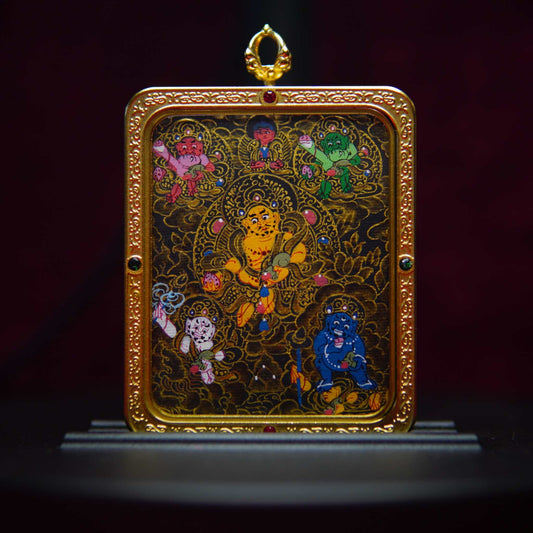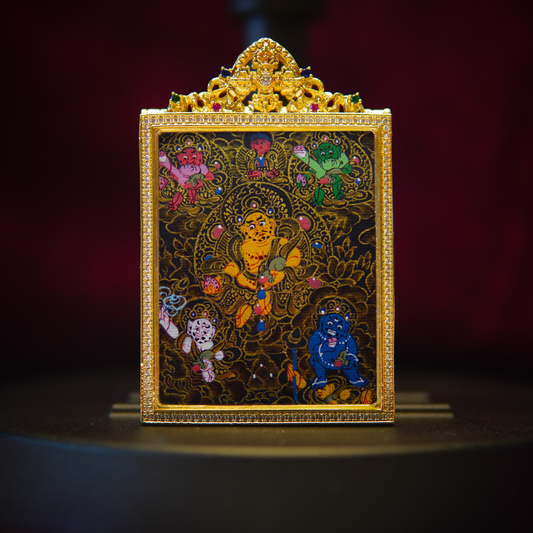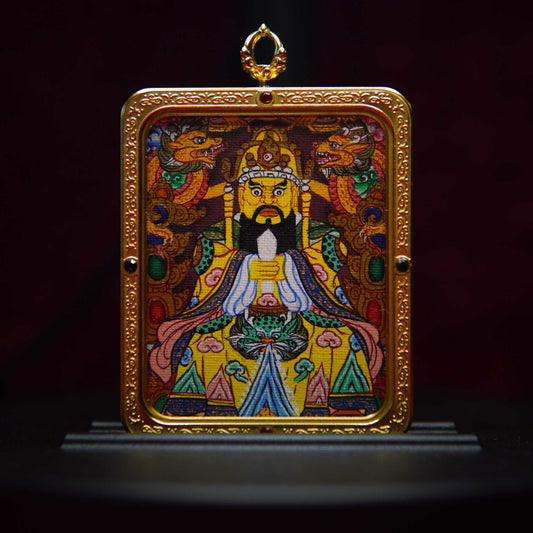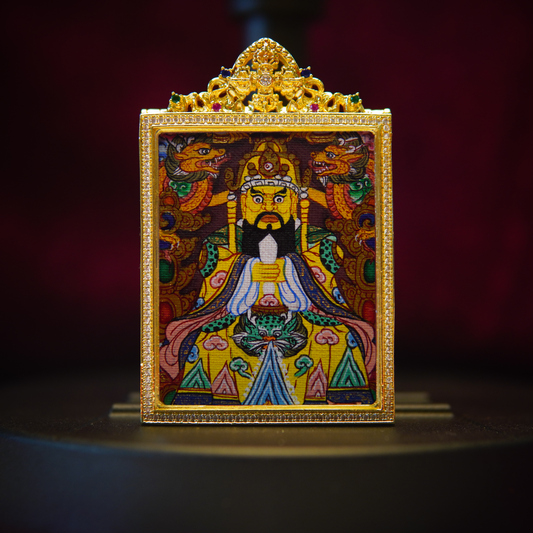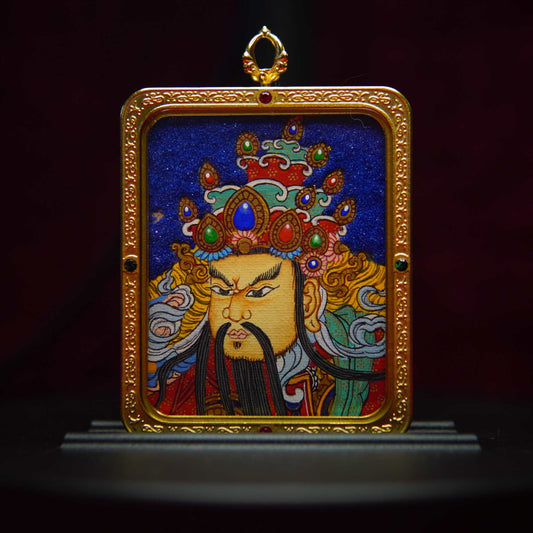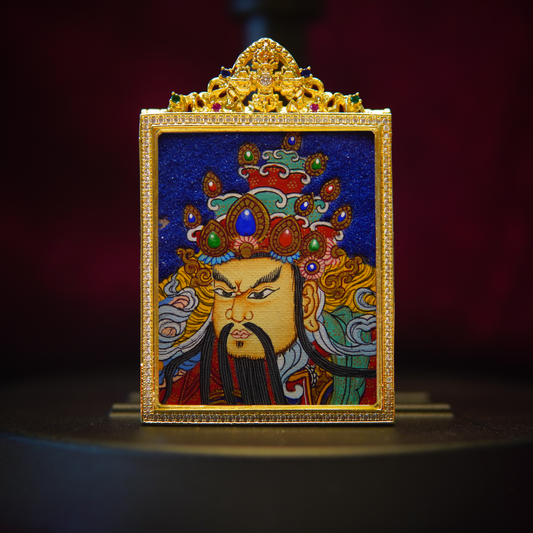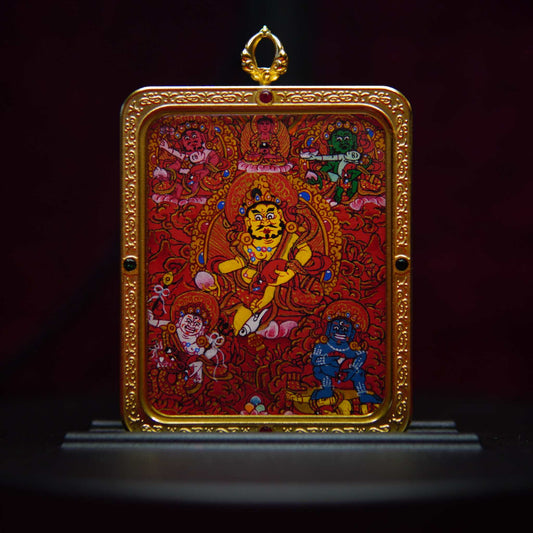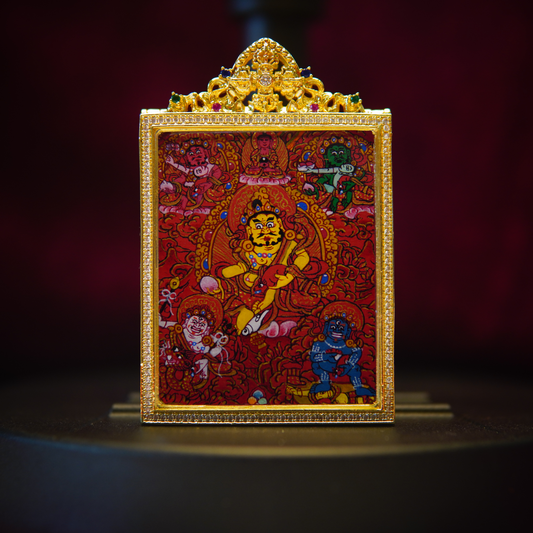Unveiling Thangka Art: Mystical Beauty in Every Brushstroke
zendoThe Ancient Art of Thangka: A Sacred Tibetan Tradition
Thangka art represents one of Buddhism's most venerable and enchanting artistic traditions. These meticulously crafted religious paintings have adorned monastery walls and personal shrines across the Himalayan region for centuries. With origins dating back to the 7th century, thangka paintings serve as spiritual tools, meditation aids, and carriers of Buddhist teachings. The word "thangka" itself derives from the Tibetan term meaning "recorded message" or "written record," highlighting their purpose as visual documentation of divine wisdom.
Each thangka serves as a portal to higher realms of consciousness, inviting viewers to contemplate profound spiritual truths. These sacred artworks transcend mere aesthetic appreciation, functioning as instruments for spiritual practice and enlightenment. Today, as Buddhist philosophy continues to resonate with seekers worldwide, thangka art has gained international recognition for its spiritual significance and extraordinary craftsmanship.
The Historical Evolution of Thangka Painting
Thangka painting emerged during Tibet's imperial period when King Songtsen Gampo introduced Buddhism to Tibet. The earliest thangkas were influenced by Nepalese and Indian artistic styles, gradually developing distinctive Tibetan characteristics. During the 13th century, Chinese artistic elements began to infuse thangka painting, resulting in a unique synthesis of aesthetics that continues to evolve.
Throughout history, thangka artists have operated within strict iconographic guidelines while simultaneously developing regional styles. The Menri, Karma Gardri, and New Menri schools each contributed unique stylistic elements that enriched the tradition. Despite political upheavals and the Tibetan diaspora of the 20th century, thangka painting has demonstrated remarkable resilience, adapting to new environments while preserving its essential spiritual essence.
The Sacred Process of Creating Thangka Art
Creating a traditional thangka involves a series of meticulously executed steps, each imbued with spiritual significance. Far from being merely technical, the creation process represents a form of meditation and devotional practice for the artist. The traditional methods have been preserved through lineages of master artists who pass their knowledge to dedicated students, ensuring the continuation of this sacred art form.
"The thangka artist does not simply paint—they engage in a spiritual practice that transforms the canvas into a dwelling place for enlightened beings." — Traditional Tibetan saying
Materials and Preparation
The creation of a thangka begins with the careful preparation of a canvas, traditionally made from cotton cloth treated with a mixture of chalk and animal-hide glue. This mixture, known as "ka-rag," creates a smooth, resilient surface ideal for the detailed work to follow. The canvas is stretched on a wooden frame, allowing the artist to work with precision.
Artists use natural pigments derived from minerals, plants, and even precious stones. Malachite provides vibrant greens, lapis lazuli yields deep blues, and cinnabar creates brilliant reds. Gold, often applied in the form of gold leaf or powder, illuminates sacred figures, symbolizing the radiance of enlightened wisdom. The preparation of these materials requires not only technical knowledge but also ritual purification and blessing.
Iconography and Symbolism in Thangka Art
Thangka paintings follow strict iconometric principles that govern the proportions, postures, and attributes of depicted deities. These principles are not arbitrary aesthetic choices but precise visual formulations of spiritual concepts. Every element within a thangka—from the central deity to the smallest landscape detail—carries specific symbolic meaning that communicates aspects of Buddhist philosophy.
Common Deities and Their Significance
Thangka art depicts a pantheon of enlightened beings, each embodying particular aspects of awakened consciousness. Among the most frequently portrayed figures are:
- Buddha Shakyamuni: The historical Buddha, often depicted in meditation posture with earth-touching gesture
- Avalokiteshvara (Chenrezig): The bodhisattva of compassion, sometimes shown with multiple arms symbolizing boundless ability to help beings
- Tara: The female bodhisattva representing compassionate action, appearing in various forms including Green Tara (protection from danger) and White Tara (longevity)
- Manjushri: The embodiment of transcendent wisdom, typically holding a flaming sword that cuts through ignorance
The postures, hand gestures (mudras), and implements held by these figures communicate specific teachings. For instance, Avalokiteshvara's four arms might hold a crystal rosary (symbolizing the power of prayer), a lotus flower (representing spiritual unfoldment), a water vessel (depicting purification), and hands pressed together (showing devotion).
Modern Interpretations and Adaptations
While thangka painting remains deeply rooted in tradition, contemporary artists continue to explore new expressions of this ancient art form. Modern thangka artists often integrate traditional techniques with innovative approaches, creating works that honor sacred principles while speaking to contemporary sensibilities. This evolution demonstrates the living nature of the tradition, capable of remaining relevant across centuries and cultures.
Thangka Art in Jewelry and Personal Adornment
The adaptation of thangka imagery into wearable art represents one of the most accessible modern expressions of this tradition. Exquisitely detailed thangka pendants and necklaces allow practitioners to carry sacred imagery close to their hearts, serving as constant reminders of spiritual principles and aspirations. These miniature masterpieces require extraordinary skill to create, as artists must capture the essence of traditional iconography on a much smaller scale.
Hand-drawn thangka pendants typically feature beloved deities such as Green Tara, Medicine Buddha, or Avalokiteshvara. Each piece undergoes the same rigorous attention to detail and iconographic precision as larger thangkas, often incorporating precious metals and gems that enhance both beauty and symbolic significance. When worn, these pieces function not merely as decorative items but as portable shrines that connect the wearer to divine energies.
| Deity | Symbolism | Benefits for Wearer |
|---|---|---|
| Green Tara | Swift protection, compassionate action | Protection from danger, overcoming obstacles |
| Medicine Buddha | Healing energy, alleviation of suffering | Physical and emotional healing, well-being |
| Avalokiteshvara | Infinite compassion, loving-kindness | Development of compassion, emotional balance |
Integrating Thangka Art into Spiritual Practice
Beyond their artistic merit, thangkas serve as powerful tools for spiritual development. Practitioners use thangka images as focal points for meditation, visualization, and contemplation. Whether in the form of a traditional painting or a contemporary adaptation like a pendant, thangka art facilitates connection with enlightened qualities and divine energies.
Meditation and Visualization Practices
In Vajrayana Buddhism, practitioners often engage in deity yoga, a sophisticated form of meditation involving visualization of oneself as an enlightened being. Thangka paintings provide the precise visual reference needed for these complex practices. By contemplating the details of a deity's appearance, attributes, and environment, practitioners internalize these qualities, gradually transforming their ordinary consciousness.
Even for those not engaged in formal Buddhist practice, thangka imagery offers powerful archetypes that can inspire personal growth. The serene countenance of Buddha reminds us of our innate capacity for peace; the compassionate gaze of Avalokiteshvara awakens our heart's natural empathy. Wearing or displaying thangka art creates an ongoing relationship with these transformative symbols.
Frequently Asked Questions About Thangka Art
As interest in thangka art continues to grow worldwide, many newcomers have questions about this ancient tradition. Here, we address some common inquiries about thangka art and its contemporary manifestations.
How can I determine the quality of a thangka piece?
Authentic, high-quality thangka art demonstrates several key characteristics: proportional accuracy according to traditional canons, fine detail work, harmonious color application, and proper iconographic elements. When examining a thangka, look for precision in the deity's features, smooth color transitions, and meticulous attention to symbolic details. For thangka jewelry, assess the fineness of the linework, clarity of the image, and quality of materials used in the setting.
What is the significance of wearing thangka imagery as jewelry?
Wearing thangka imagery as jewelry allows practitioners to maintain a constant connection with enlightened energies. In Buddhist traditions, continual mindfulness of divine qualities helps transform consciousness. A thangka pendant serves as both a beautiful adornment and a spiritual reminder, helping the wearer cultivate beneficial qualities associated with the depicted deity. Many practitioners report feeling a sense of protection, inspiration, or peace when wearing sacred imagery.
The adaptation of sacred art into wearable forms represents a natural evolution of Buddhist practice, making spiritual tools accessible for everyday life. Far from diminishing their sacredness, thoughtfully created thangka jewelry extends the tradition's living presence into contemporary contexts.

